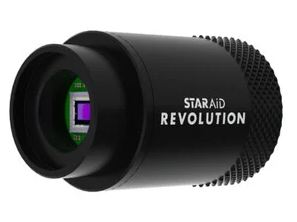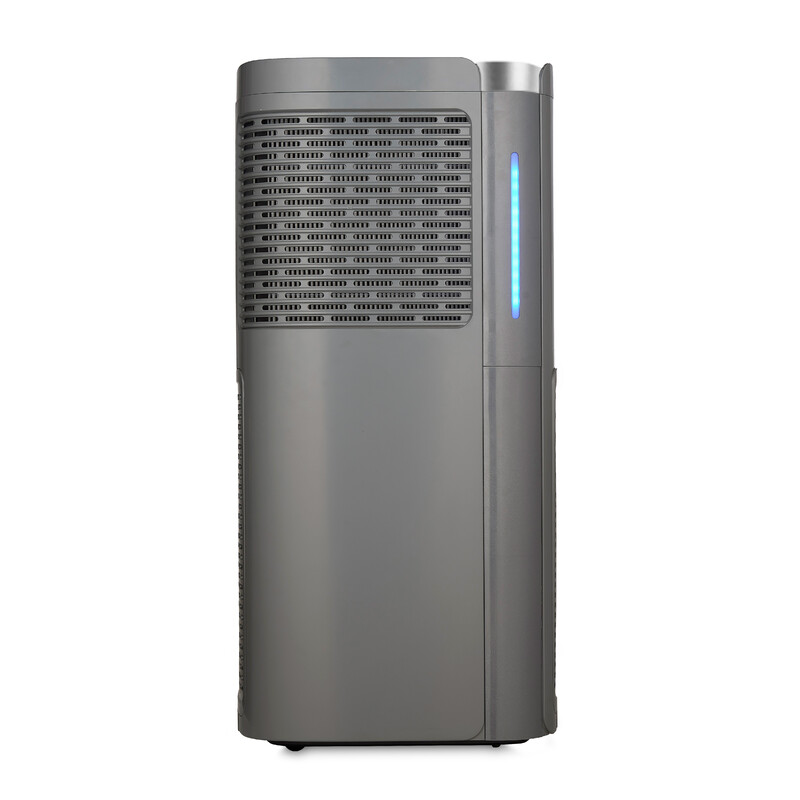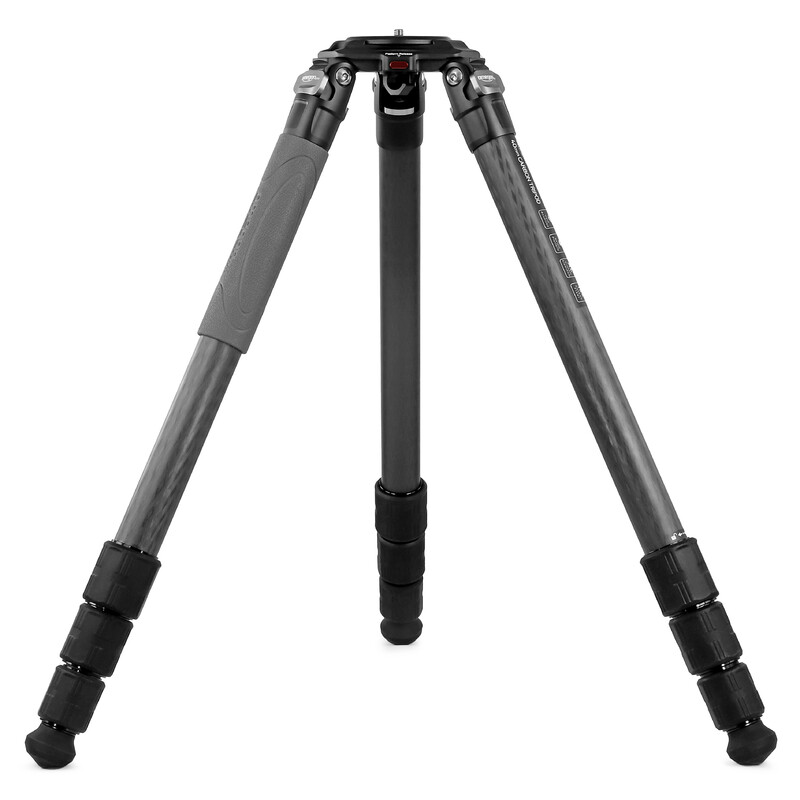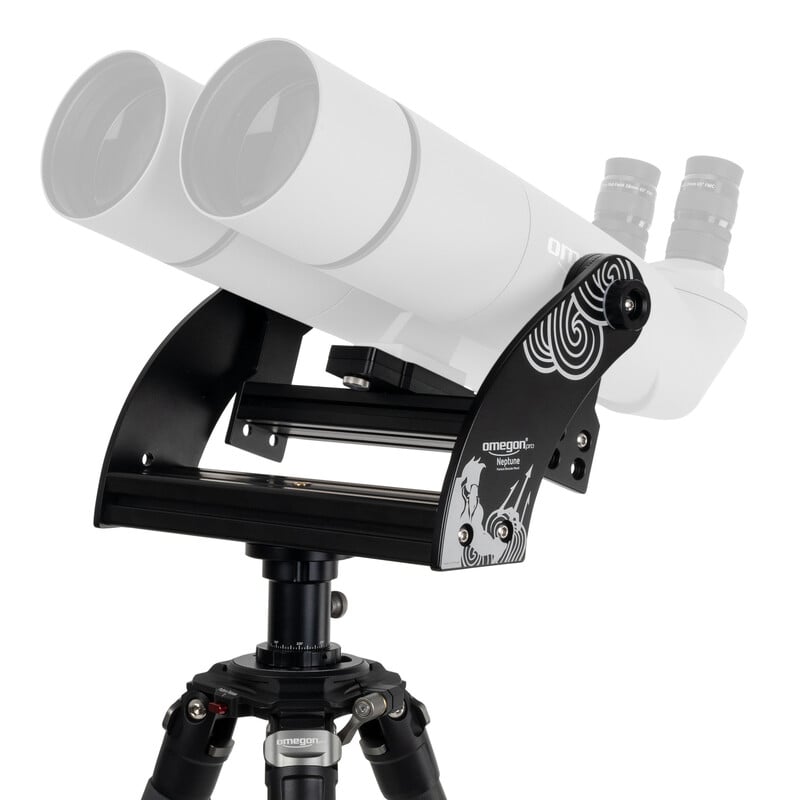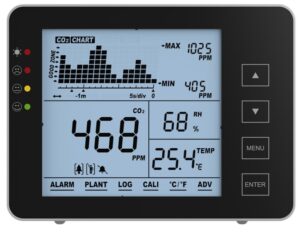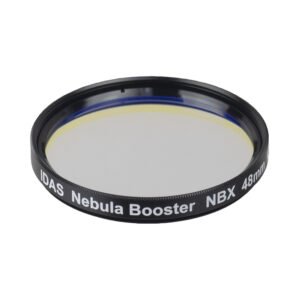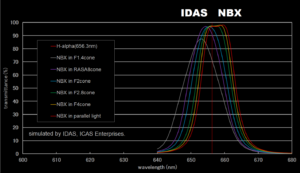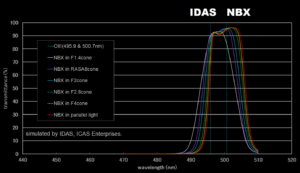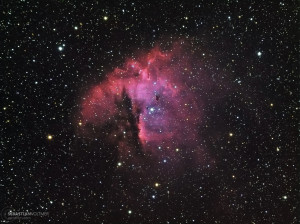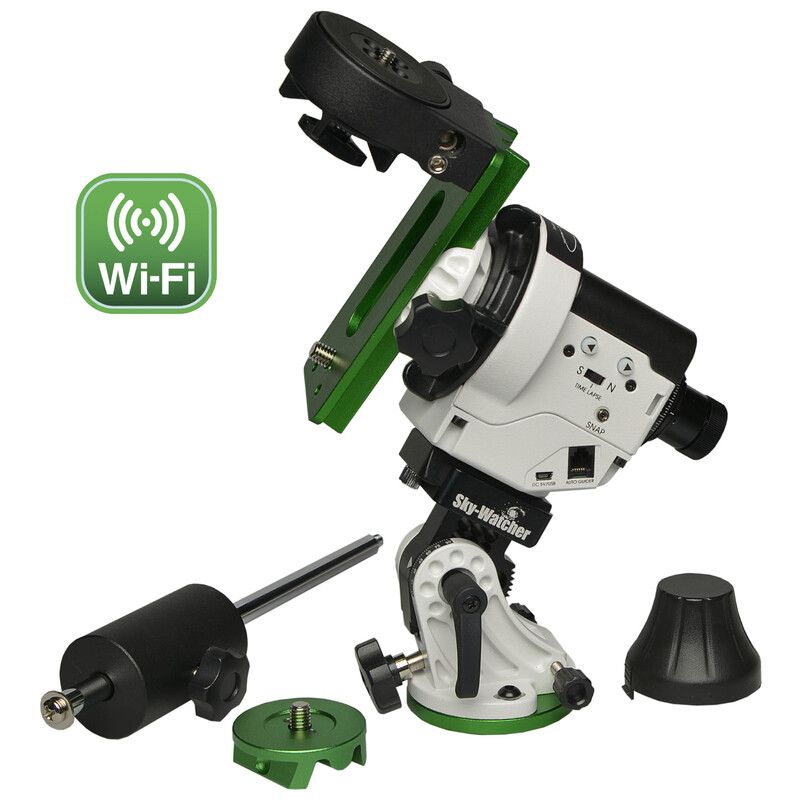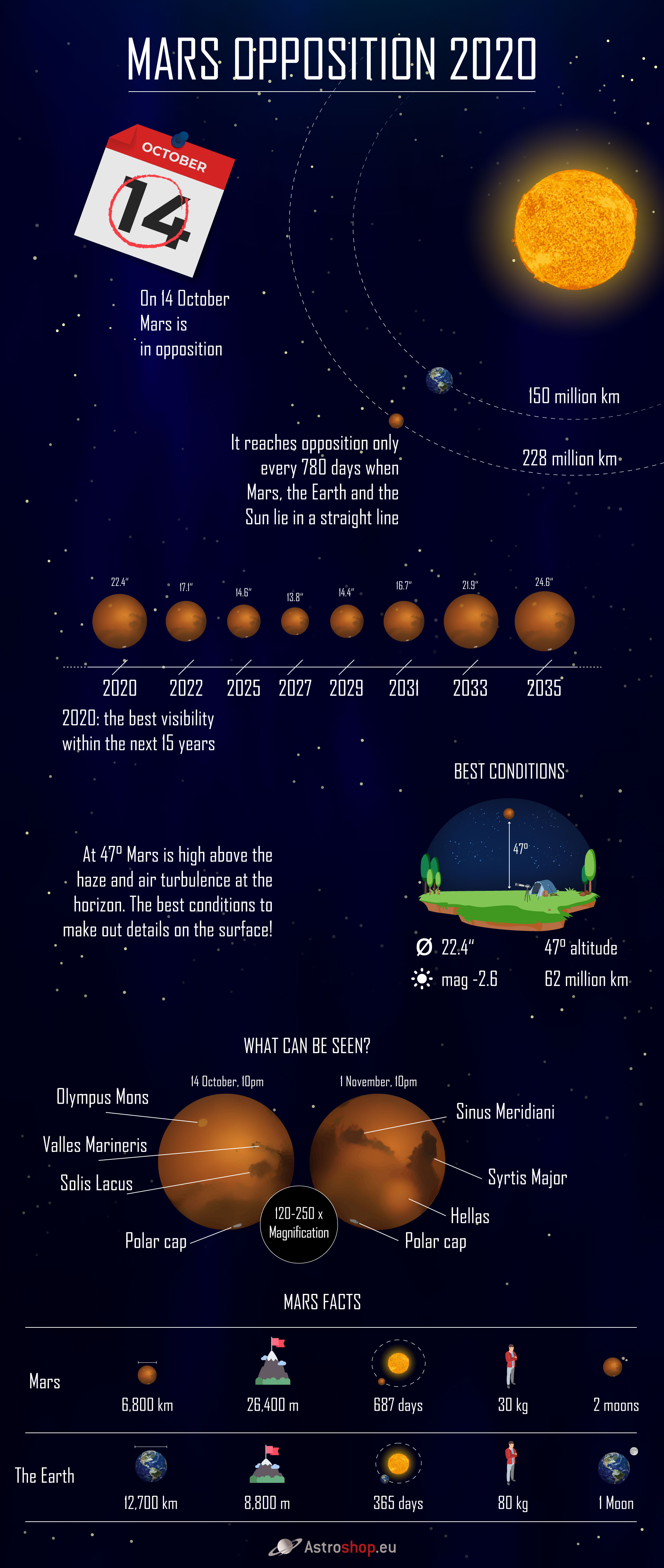An extremely close encounter between Jupiter and Saturn, Mars and Uranus together in your field of view and the Geminids coincide with a new Moon. Once again there are all sorts of reasons to take a look and admire the starry sky. In the infographic “Astronomy Highlights in Winter 2020/21”, you have all the important celestial events occurring in the next three months at a glance. We wish you lots of observing pleasure!
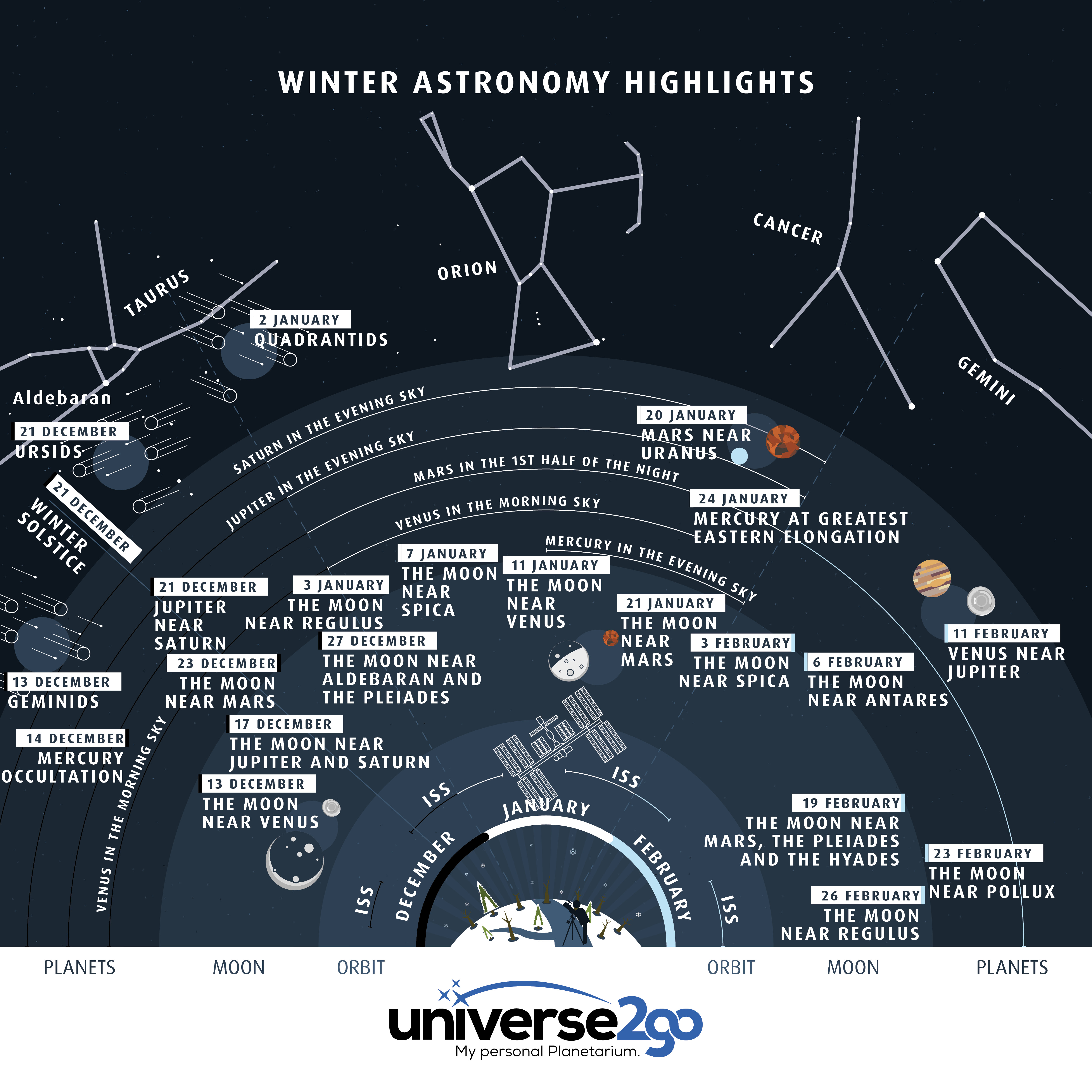
December:
13/12 Geminids
If the evening sky is clear, take a look to the south. The Geminids meteor shower will appear to be originating from the constellation Gemini. Or to be more precise: from a point two degrees above the star Pollux. The best time for observing is between 21:00 and 06:00 CEST. With 120 meteors per hour, the Geminids are among the most active meteor showers. We are especially lucky with the timing this year since we have a new Moon and so we can observe, undisturbed, all night.
13/12 Conjunction between the Moon and Venus
Are you an early bird who can think of nothing better than to gaze at the stars in the early hours? This morning it will be worth your while. From around 05:30 GMT (06:30 CET) you can see lustrous Venus in the sky and, underneath it, the delicate crescent Moon – since the very next day we have a new Moon. This weekend is perfect for deep-sky observing.
17/12 Conjunction between the Moon, Saturn and Jupiter
We are able to enjoy this attractive event thanks to the fact that at the moment it gets dark early. At dusk we see a conjunction between Jupiter, Saturn and the young waxing crescent Moon. The two gas giants accompanied us throughout last summer and every evening they were the brightest objects in the southern sky. Now they disappear early and let the winter sky take centre stage.
21/12 Ursids
The Ursids are a meteor shower on which you can keep your eye on all night. This is because they originate from the constellation Ursa Minor, from which these meteors also get their name. These beacons speed across the sky considerably slower than the Perseids – at around 35 kilometers per second.
21/12 Winter solstice
21/12 Conjunction between Jupiter and Saturn (note: they appear very close together)
Are you observing the Star of Bethlehem today? It’s the highlight of the month and you definitely shouldn’t miss it. On 21 December, coinciding with the winter solstice, Jupiter and Saturn present us with an unusual spectacle since in this conjunction they are just 5 arc minutes apart. A truly rare sight.
Let’s step back in time: Jupiter and Saturn also met one another in the year 7 BC. In that year a total of three such conjunctions in constellation Pisces between these two planets occurred. Scientists can still prove that today. We can assume that, due to its distinctive nature, this was what became to be known as the Star of Bethlehem. An interesting association so close to Christmas, isn’t it?
How about observing both of them through your telescope in a single field of view? You need to be sure to take up your observing position early. Preferably around 17:00 CET when the gas giants are sufficiently high in the sky, since in less than 1.5 hours they will disappear into the haze on the horizon.
21/12 The Moon occults mag 4.3 star
At 20:04 GMT (21:04 CET) the Moon occults the 4.3 mag star 30 PSC, which belongs to the constellation Pisces. What is especially beautiful is that the Moon moves closer to the star from its unilluminated side, so suddenly the star disappears as if it was simply switched off. At 21:15 GMT (22:15 CET) it twinkles again from the other side of the Moon.
23/12 The Moon near Mars
In October Mars stood in favourable opposition and was spectacular to see. Now it is in the constellation Pisces where it can be observed during the first half of the night. This evening the Moon joins it.
24/12
Happy Christmas!
27/12 The Moon near Aldebaran and the Pleiades
Even people who do not concern themselves with the night sky notice the Pleiades, and they often mistake them for Ursa Minor. Observers of the sky know differently: it is the best-known open star cluster which has been observed by mankind for thousands of years and which has a special significance for many cultures. Tonight the Moon meets up with the Pleiades and with Aldebaran, the brightest star in Taurus.
January:
02/01 Quadrantids
The Quadrantids is a meteor shower originating from the constellation Boötes. The new year starts with an astronomical performance which delivers around 120 meteors per hour. The radiant, from where the shooting stars appear to originate, only appears after midnight. Unfortunately, this year the bright Moon disturbs the show, since full Moon was only three days ago.
03/01 The Moon near Regulus
Today the Moon and Regulus can be seen, with a separation of 4 degrees. The name Regulus means ”little king“ in Latin. Because of its proximity to the ecliptic, it regularly meets the Moon.
07/01 The Moon near Spica
Spica is a massive blue star, a variable star, and at the same time a binary star system. 262 light years away, 13,000 times brighter than the Sun, and 7.5 times larger than the radius of the Sun, it takes 16th place in the list of the brightest stars in the sky. Spica is located at the ear of grain that Virgo holds in her left hand, this is also the origin of the star’s Latin name. On 7 January the Moon is nearby.
11/01 The Moon near Venus
On the morning of 11 January dawn is nearly over when Venus rises at 06:00 GMT (07:00 CET) and meets the slender crescent Moon above. At this point the Sun is still just 9 degrees below the horizon.
20/01 Mars near Uranus
The planet Uranus is theoretically visible with the naked eye. However, in practice the 2.9 billion kilometre distant planet is not so easy to find. The problem is that it is so small that it can be difficult to distinguish from a star. This is tricky with binoculars, but is a little easier with a telescope where you can distinguish one ”star“ with a minimally-greater diameter from another. This evening you can find Uranus more easily because it comes near Mars at a distance of 1.5 degrees.
If you use an eyepiece with a longer focal length then you can admire both in your field of view.
21/01 The Moon near Mars
Today the Moon passes Mars at a separation of 5.5 degrees.
24.01. Mercury at greatest eastern elongation
Mercury orbits the Sun so quickly and so close, that we cannot always observe it. However now Mercury is once again at a greater angular distance of 18 degrees from the Sun. That’s not a large number, but we can nonetheless observe it during its half phase. Mercury is to be seen in the evening sky shortly after sunset. Whatever you do, wait until the Sun has set. Then you will discover Mercury just above the western horizon.
27/01 Mercury at best visibility
Today Mercury reaches its highest position in the night sky, and with it its best evening visibility. From tomorrow its orbit sends it lower, back towards the horizon.
February:
03/02 The Moon near Spica
Once again, this morning the Moon passes by star Spica in Virgo. What is behind these frequent encounters? The ecliptic lies above Spica which ensures that the Moon frequently comes to visit.
06/02 The Moon near Antares
This morning, the 23-day old and waning Moon meets Antares, the brightest star in the constellation Scorpius.
19/02 The Moon near Mars, Pleiades and the Hyades
A fine sight in the evening sky: the Moon visits the constellation Taurus and remains in a position between the Hyades and the Pleiades. Both are ancient open star clusters that people have been observing since time immemorial. Mars joins in too. Isn’t this get-together worth a photo?
23/02 The Moon near Pollux
In the last days of the month the waxing Moon wanders from the constellation Taurus towards Gemini. This evening it meets Pollux, a red giant star that is 34 light years away.
26/02 The Moon near Regulus
Just a few hours before the full Moon, our satellite meets up with Regulus, the brightest star in Leo. When dusk is over we see an interesting image in the starry sky: in the west the autumn constellations are disappearing from view, in the south the winter constellations reach their highest point, and in the east spring is climbing over the horizon.

